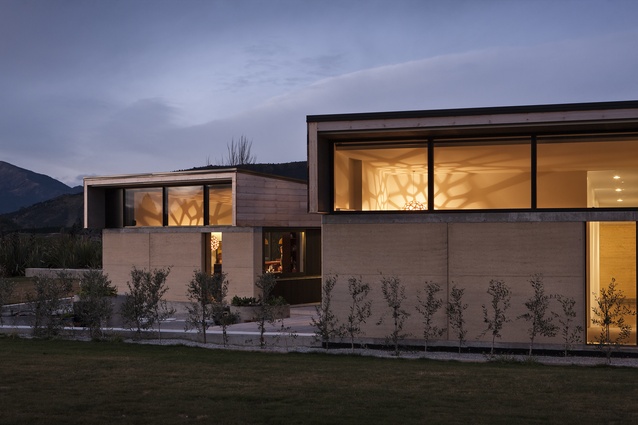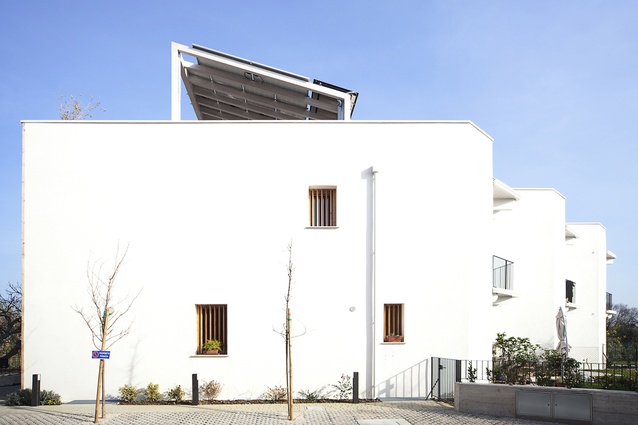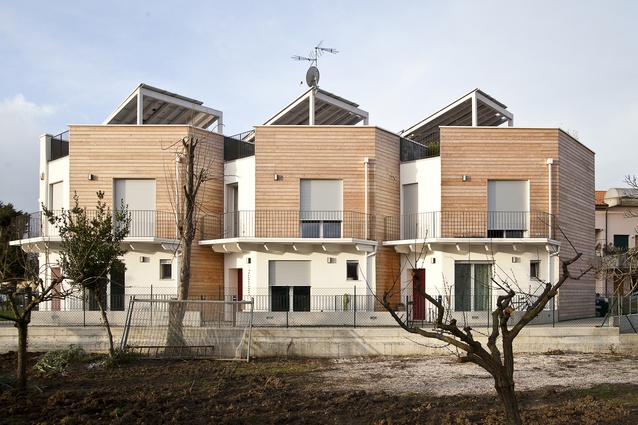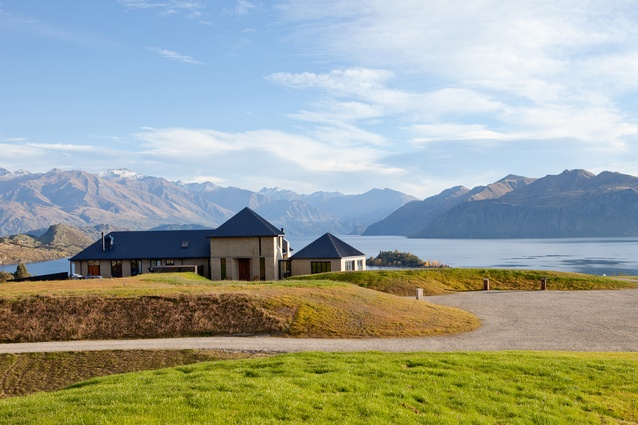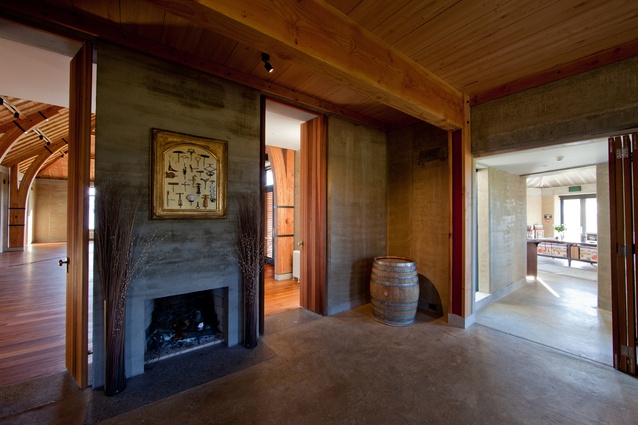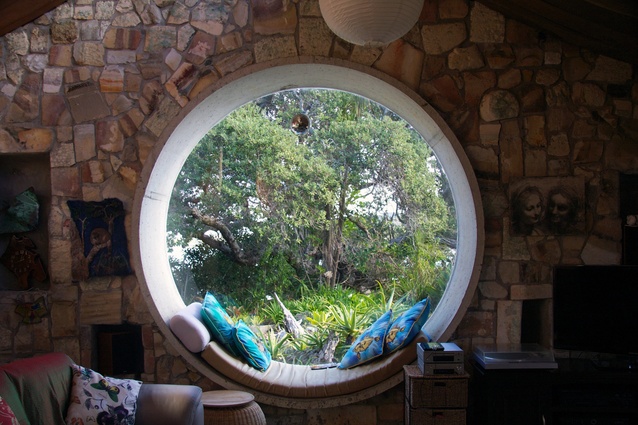Materials matter too: a case for natural building
Over a year has passed since the highly successful International Straw Building Conference, ISBC 2016, held in Methven, and it is a good time to reflect on the issues raised during those five days of intense discussion, debate and doing. The theme of the conference, “Natural Building in the 21st Century,” promoted lively discussion about how natural materials not currently in common use might become more widely accepted.
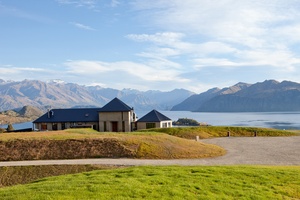
‘Natural Building’ is a broad and perhaps overly simplistic term, but never-the-less it is widely used and refers to building with materials that are readily available, minimally processed, non-toxic, and renewable or recyclable: materials like earth, straw, hemp and timber. All these have low embodied energy – low carbon footprints – an attribute which makes the less commonly used natural materials worthy of further investigation.
Over the lifetime of a building, operational energy is considerably larger than the embodied energy of the materials used for construction, but this does not mean the embodied energy is insignificant, particularly in a country like New Zealand, where seventy five per cent of the energy generated to operate everything, including buildings, comes from renewable sources.
Ironically, it can be argued that the focus on energy efficiency has inadvertently added to spiralling embodied CO₂ emissions, through the use of high energy insulation materials. Dr Andrew Alcorn1 has been telling us that materials really do matter for some time now and this point was strengthened by Bruce King, one of the keynote speakers at ISBC, who pointed out it is that upfront embodied energy or embodied CO₂ emissions of the material makeup of our rapidly growing built environment that has more of a global impact over the next two decades than its operational energy. At the beginning of a building’s life, the CO₂ emissions associated with it are all embodied in their substance. Materials matter too.

As you would expect at an international straw building conference, straw was a major topic of discussion. Keynote speaker Craig White, an architect from England, has developed the Modcell system in partnership with the University of Bath, where prefabricated straw bale panels are being used to construct medium density housing projects and educational facilities, as well as stand-alone houses. The system has been rigorously tested for structural integrity, weather tightness, fire, acoustics, thermal performance and indoor air quality.
Both Modcell and the University of Bath are also involved in an EU-funded initiative, ISOBIO, investigating the use of bio-based materials at scale. Let us hope Brexit does not affect this exciting project. Giovanna Nardini from the Italian firm Archética presented a recently completed townhouse triplex in Fano – a high seismic area – incorporating prefabricated timber structure with on-site straw bale and hempcrete brick infill, and lime plasters in and out.
Both the Modcell and Archética projects demonstrate a contemporary straw bale architecture not found in New Zealand. Why is this? As Craig White observed, “New Zealand appears to be traumatised by the leaky building problem, which could lead the conventional construction industry to reject natural buildings because of perceived rather than real risks.” He has a point.
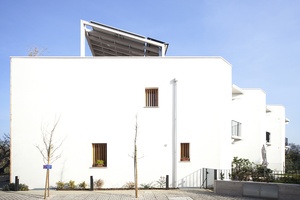
When design professionals and territorial authorities have engaged with straw bale here, they have tended to take a conservative approach and favoured roofs with deep eaves. There is not necessarily anything wrong with this approach, but as more building professionals become familiar with the material, further options will no doubt be explored.
Bio-based materials like straw and hemp present an opportunity to significantly reduce the carbon footprint of new buildings. In New Zealand, straw is already available in quantity in grain growing areas like Canterbury, but currently it is treated as a low value bi-product.
Industrial hemp is being grown under license in Taranaki, Waikato, Hawkes Bay and Canterbury but currently we do not have the equipment necessary for processing the stalk into the hurd, also known as shiv, used in hemp lime construction and commonly referred to as hempcrete. The few hempcrete buildings that have been built in Aotearoa to date have used imported product, a necessary compromise if we are to have the skills and experience necessary when our fledgling hemp industry starts producing homegrown product.
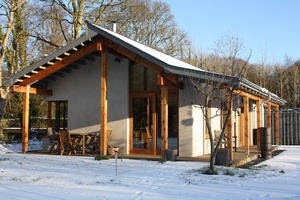
Architect Rachel Bevan from Northern Ireland and expert in hemp lime construction was also a keynote speaker at ISBC 2016. She and partner Professor Tom Woolley co-authored the comprehensive Hemp Lime Construction and also constructed a hemp lime cottage on their own property, giving them the opportunity to monitor its performance in use. They found that hempcrete naturally regulates indoor humidity levels, keeping it to the comfort band of 40 to 60 per cent, too low for mould to develop and not low enough to be a problem for asthmatics.
Bevan says, “There are no breather membranes, building papers, tapes etc. Hempcrete’s performance relies on it being monolithic, breathable (meaning vapour permeable), with good insulation and thermal mass.”
Earth building in Aotearoa has a long history for both Māori and Pakeha and no one here knows more about it than architect Graeme North who has been designing and building in earth for over forty years. Graeme’s expertise is recognised internationally particularly for his role in developing the 1998 suite of Earth Building Standards, which provide a clear path for building professionals and territorial authorities to follow when using earth.
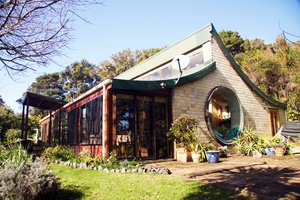
The story of Graeme’s first foray into earth, designing and helping build a house for potter Yvonne Rust near Whangarei in 1972, was highly commended in the 2016 Warren Trust Awards for Architectural Writing. The house, built out of rammed earth and recycled materials – all sourced locally – was the first of many houses designed by Graeme incorporating all types of earth construction, with many of these built by their owners.
Indeed, the easily learned building skills, particularly when using adobe, pressed earth bricks or cob, make earth building particularly attractive to owner builders. This is reflected by the fact that seventy five per cent of earth buildings constructed since the middle of last century have been built by their owners, mostly in rural locations.
Another advantage of earthen walls lies in their being monolithic. Structure and linings, exterior and interior, are one in the same and no additional high carbon footprint materials are required. Recent developments have seen lightweight materials introduced to adobe brick and cob mixes to improve their thermal resistance when used for exterior walls. Heavier weight walls are better used internally to take advantage of their thermal mass.
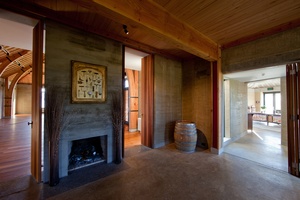
Like North, a handful of other architects in New Zealand have remained committed to natural materials throughout their careers. Many others are attracted to rammed earth in particular, but very few have used it. Two recent examples of one-off architect-designed rammed earth buildings are Rafe MacLean’s Rippon Winery near Wanaka and Assembly Architects’ 2016 NZIA Award-winning Arrowtown House. The decision to use earth was client driven in both projects, but even though the architects can count their earthen endeavours on two digits they both say they are keen to use the material again.
So what is holding natural building back in Aotearoa New Zealand? We do not have a shortage of raw material but we do have a shortage of design and building skills, and we are behind in the development of products that would enable building at scale. Very few tertiary and level courses include natural building. Unitec has been running an elective for the last two years and some other polytechnics run courses from time to time.
The only consistent way of learning is via workshops that are usually run during the process of building someone’s house. What workshops there are, are generally advertised on the EBANZ (Earth Building Association of New Zealand) website and the charitable organisation, The YIMFY Trust, which aims to facilitate a more formal training programme.
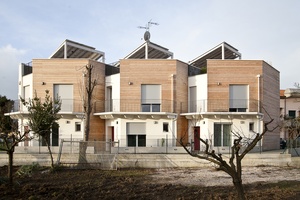
In order to build at scale, industry partnerships are necessary. Currently the only commercial earth brick yard in the country, Solid Earth in Nelson, supplies to order and would need much greater demand in order to grow. Hemp production has not come on stream in sufficient quantity yet but may well do so and if straw building is to grow, a buy-in from the grain growing industry and some form of commercialised panel construction are necessary.
In Aotearoa New Zealand we have a strong base from which to develop low and ultra-low carbon architecture. Homegrown timber framing is firmly entrenched as the national vernacular and much of our energy is generated by renewable sources. We have the additional natural ingredients and the knowledge, we just need a commitment from all sectors of the construction industry to promote and enable their use on a larger scale.
[1] Alcorn, Andrew. 2010. “Materials Matter More”, SB10 Conference, paper. Wellington.

